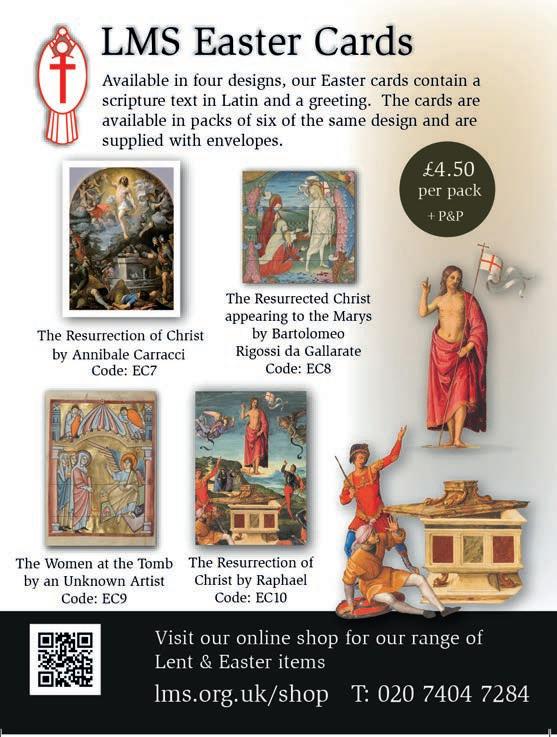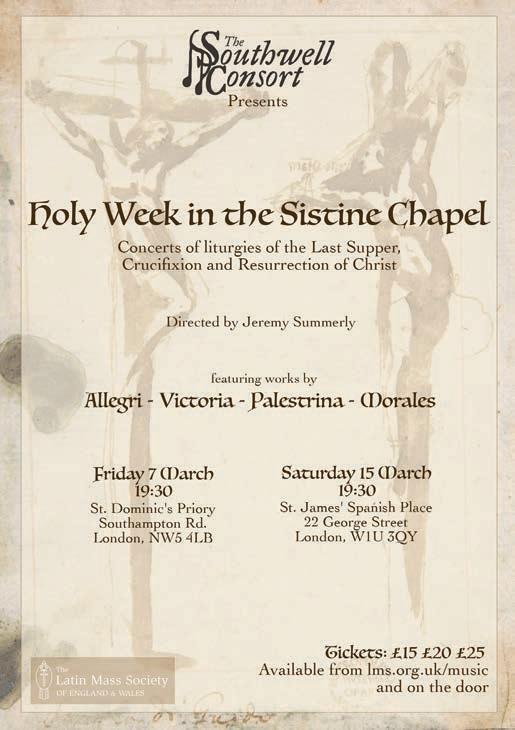
8 minute read
God is Who He Is
In his second article on the Creed, Fr Aidan Nichols explains that whatever the universe contains, from a galaxy to a gnat, it only does so through created participation in God’s unique, incomparable, ‘act’ of being
The opening words of the Creed can only end by naming God. The absolute self-commitment implied in the Latin phrase credo in would be totally misplaced if it had a creature for its object. In the Latin language, to say, ‘I believe in’ – and mean it – is to entrust oneself unconditionally to whatever or whoever is going to conclude that very short sentence. In such a confession of faith, substituting a creature for God would mean for the speaker spiritual death.
Unfortunately, many people who ought to understand the force of the Creed’s introductory phrase turn out in practice to have a distinctly truncated idea of God, undermining the entire enterprise of reciting the Creed from the outset. A God – really, I should write that as ‘God’ – who is simply a very important personage in the cosmos is just not big enough to fill the space the Creed’s first words open to us. People who would be horrified at the accusation of idolatry – the suggestion that they were inclined to worship, say, totem poles or the simulacra of a fertility goddess – may still be what we might call conceptual idolaters. That is why St John Damascene, speaking for the Eastern Fathers, and St Thomas, speaking for those of the West, are agreed that the primary Name of God was revealed in God’s self-description to Moses: ‘I Am Who Am’: God is ‘He Who Is’. (Compare the account of Moses at the Burnish Bush in the Book of Genesis 3:14.) It is God’s nature to be. Not just to exist, as in the case of that Very Important Personage just mentioned, but to be the Fount of being, in such a way that whatever the universe contains, from a galaxy to a gnat, it only does so through created participation in God’s unique, incomparable, ‘act’ of being. All possible perfections are actual in this ‘Being One’, which is how that divine Name appears in Greek (‘Ho Ôn’) on Byzantine icons. All goodness, truth, and beauty are pre-contained in God’s unsurpassable fulness.
That is why, of course, there can only be one God. The exclusive oneness of God is a truth of reason as well as of faith. To suggest there might be two, three, or half a dozen gods, or even a crowd of them, as on Mount Olympus in classical mythology, is to show we have never grasped the idea of God in the first place. The Nicene Creed rubs this in by making explicit what is only implied in the Apostles’ Creed. Credo in unum Deum, I believe in the God who is one.
And while on the topic of misunderstandings, I might add that another slip concerns God’s gender, or, better, the gendered language in which we speak of God. As the fulness of being, God surpasses all distinctions among his creatures, the gender distinction among them. That said, a great deal turns on whether the gendered language in which we speak of God is primarily masculine or feminine. The language, including the symbolic imagery, for God in biblical revelation is primarily masculine. That is for reasons intimately bound up with the way Scripture sees the relation between God and the world. If God’s relation with the world were one of seamless continuity, then the predominant language for the divine Fount of being would be female and maternal.
Our metaphysical relation to God would be like the umbilical cord that attaches – literally! – the baby to its birth-mother. But revelation shows that is not how things stand. Our relation of dependence on God is that of creation – where God makes things to exist by bringing them from nothing, in a fashion that is discontinuous, unexpected, and, indeed, concealed. That is what makes male and paternal language best suited to God. There would be no suits of contested paternity if the biological father were as obvious to everyone as the biological mother. But once, with the Bible, we grasp this crucial point, then we can – again, with Sacred Scripture –confess how ‘motherly’, in the sense of caring, tender, and compassionate – the Father is.
‘The Father’, for that is the next affirmation of the Creed. Here, though, the makers of the Creed have more in mind than just how the universe stands in relation to its Source. For the New Testament revelation (here the Old Testament can only furnish the odd clue), God is named ‘Father’ inasmuch as he is the Generator of the Beloved, the Only-begotten, the Son. From before all worlds, which is as much as to say, prescinding from any notion whatsoever of a universe, the one God enjoyed his plenary being by communicating his divinity to Another. That took place – takes place, for the act concerned is eternal, still going on now – in a movement of superabundant generosity so exquisite that the only name we have for it is ‘love’. Unlike the cosmos, which is made, the Son is loved into being, proceeding from
The angels exist in perfect integrity of being, with minds and wills thoroughly ‘oned’ with God the Father in the Holy Spirit. That is why, in his commentary on the Pater, St Maximus the Confessor can remark that in the opening words of the Lord’s Prayer – namely, ‘Our Father’ –the entire Trinity is confessed.
The Son’s procession is the primordial revelation of who God is, and of what God is like. The fruitful generativity of the Father, already indicated in his distinctive or ‘proper’ name, signals in advance the style of all God’s creative and redemptive action.
The Fatherly One not only pours out being in creating the world but seeks to give rational creatures the dignity of sons and daughters. The Oratorian theologian Louis Bouyer explains the connection, in the light of the drama of revelation as the Church knows it.
‘In eternally begetting his Son, the Father was already conceiving us all in him. Better still, in begetting him, in projecting himself fully in his Son as the name in which he gives and reveals himself, he made the Son, by the same token, the Word which expresses us all with him, in him –expresses us as destined to be adopted in him, united to him and in him, in order to be, in return, adopted and united in his Father and our Father, as the Son himself is in the Father.’ 1
This signature-tune of divinely fruitful self-giving is the recommended perspective for understanding the Father’s ‘almightiness’ – for omnipotence is the next claim the Creed will make on God’s behalf. ‘I believe in God, the Father almighty.’ Creation, redemption, and the consummated union: these are the wonderful works in which the divine might is displayed, and all of them, if their archetype is the Father-Son relation, must be works of love.
But precisely that is what makes the problem of evil so seemingly intractable. When Austin Farrer, sometime Warden of Keble College, Oxford, wrote a book on ‘theodicy’ –the defence of the goodness of God in the face of the horrors found in nature and history – he gave it the admirable title, Love Almighty and Ills Unlimited.2 On the macro-scale every earthquake or tsunami, and on the micro-scale every death of an innocent, whether by accident or, worse still, out of malice, plunges us once again into this quagmire for Christian apologetics.
Here above all we must be canny. Though bereaved or traumatised people are not the best listeners, we do indeed have arguments that soften the blow. The world is not a puppet-theatre where the Creator can be constantly interfering to manipulate his marionettes. There can be no development of virtue in its full range unless hard demands that call for fortitude come our way. But we must be careful not to over-egg the pudding. Were argumentative extenuations of those ‘ills unlimited’ ever to succeed totally, demonstrating to universal satisfaction that all is for the best in the best of all possible worlds, the need for the Christian religion would, quite simply, evaporate.
Only because all is not ‘for the best’ – far from it – is a religion of transformative redemption the recipe the world is looking for without being aware of the fact. Only an Incarnation that promises universal repair – the regeneration of wills enmeshed in moral evil, the harmonisation of nature with happiness by the abolition of physical evil – can serve our turn. If Scripture opens with genesis, it ends in apocalypse. Only when, at the End of the ages, the Spirit and the Bride say ‘Come’ to the Lamb who was slain, 3 does heaven descend to earth – which can also be described with equal justice as the entry of earth into heaven.
For the Father, as the Nicene Symbol now asserts, is ‘Maker of heaven and earth’, of ‘all things visible and invisible’. The Church Fathers take ‘the heavens’ to mean the realm of the angels, another dimension to a universe already (even for the ancients and medievals) mindblowingly vast. The angels exist in perfect integrity of being, with minds and wills thoroughly ‘oned’ with God. The wedding of heaven and earth will be the entry of the visible world into those angelic conditions of creaturely wholeness and Godly union.













